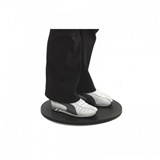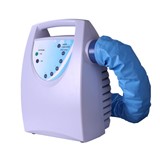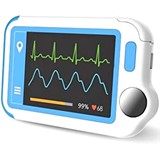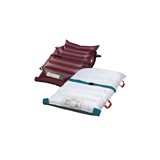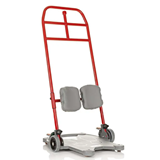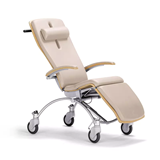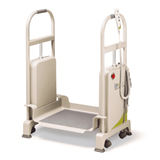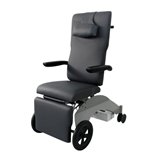Key Takeaways
- Onboarding starts before day one. The most effective strategy is "pre-boarding". Send all compliance paperwork, privacy policies, and IT login details to your new hire digitally before their first day, so day one is about culture and connection, not paperwork.
- Use your PMS 'training mode'. The best tool for training new staff is built right into your software. Most modern Practice Management Systems (PMS) in Australia have a "sandbox" or training mode that lets new hires practise billing, booking, and patient records without touching the live database.
- Assign a "buddy," not just a manager. A dedicated "buddy" or mentor for the first two weeks provides a safe, go-to person for small questions, dramatically reducing disruption to senior staff and managers.
- Structure the first week. Create a simple, day-by-day checklist for the new hire. A structured plan that balances observation (shadowing) with hands-on, supervised practice is the fastest way to build competence.
- Don't mistake compliance for competence. Ticking off a WHS policy is not the same as understanding your practice's workflow. Training must focus on your specific processes for managing patient care, privacy, and billing.
- Compliance training must be role-specific. Don't just hand over a policy manual; use practical scenarios to train admin staff on privacy at the desk, and teach clinicians the "why" behind your WHS and MBS billing protocols.
- Tailor onboarding to the role. Focus your administrative hires on mastering process and technology (like your PMS), while you orient new clinical staff on your practice's specific culture and clinical governance (like referral and prescribing policies).
Introduction: The high cost of a bad start
In Australia's high-pressure healthcare landscape of 2025, finding qualified medical staff is only half the battle. With Australian healthcare and social assistance continuing to be the nation's largest employing industry, staff turnover remains a persistent and costly challenge. Every time a new person starts, your practice faces a critical, high-risk period where a chaotic onboarding process can lead to disrupted patient care, frustrated existing staff, and costly administrative errors.
A poor onboarding experience is a major drain on your business. Industry estimates suggest the cost of a bad hire, or a good hire who leaves quickly, can be up to 1.5 times their annual salary. You can't afford to get it wrong. This article is a practical guide for Australian practice managers on how to implement an effective onboarding strategy that integrates new staff seamlessly, maintains high-quality patient care, and protects your practice's productivity.
The 'pre-boarding' solution: Set up new hires for success
The most effective way to ensure a new hire's first day is productive is to complete all the administrative "drudgery" before they even walk in the door. This is "pre-boarding."
A week before their start date, send your new hire a digital welcome pack. This isn't just a friendly "hello"; it's a strategic tool. It should include:
- Digital paperwork: All employment contracts, TFN declarations, and superannuation forms to be completed online.
- IT logins and setup: Their email account, PMS login, and any other system access should be ready and waiting.
- Mandatory reading: Key compliance documents like your WHS policy, infection control procedures, and your practice's privacy policy (which is critical under Australia's Privacy Act).
- The first-week plan: A simple schedule for their first few days so they know exactly what to expect.
When your new hire arrives on day one, their workstation is ready, their logins work, and their time can be 100% focused on learning their role, meeting the team, and understanding your practice culture, not filling out forms.
The first week: A structured plan and the buddy system
The first week is all about building competence and confidence without overwhelming the new starter or your existing team.
- Assign a dedicated 'buddy'. The single most effective onboarding strategy is a good buddy system. This should be an experienced, positive team member (not their direct manager) who acts as a go-to person for all the "small questions" new hires are often afraid to ask a boss. This insulates the practice manager and senior clinicians from constant interruptions.
- Create a structured checklist. A new hire is absorbing a huge amount of information. A simple checklist can guide their learning and ensure nothing is missed.
- Day 1: Tour, team introductions, WHS induction, overview of the PMS.
- Day 2: Shadowing the 'buddy' at the front desk, observing the check-in and billing process.
- Day 3: Supervised "hands-on" practice with the PMS training mode.
- Day 4: Learning your practice's specific triage and emergency protocols.
- Day 5: Review of the week with their manager and buddy.
Using technology to train without risking patient data
This is the best solution for the "how to train" problem. Throwing a new employee directly onto your live Practice Management System is a major risk to patient data integrity and billing accuracy.
The best and safest training tool is one you already own: your PMS training mode.
- What it is: Most major Australian PMS providers (like Best Practice and MedicalDirector) include a "sandbox," "training," or "demo" mode. This is an exact copy of your system that is not connected to your live patient database.
- How to use it: You can create fake patients and scenarios, allowing your new hire to practise every part of their job in a live but safe environment. Let them book complex appointments, process different billing types (private, bulk-bill, DVA), and learn how to manage patient records without any risk of disrupting care or corrupting data.
For mandatory compliance training (like WHS or privacy), online Learning Management Systems (LMS) can deliver and track this, ensuring you have a clear record for accreditation.
When to call in specialist onboarding services
While most onboarding can be managed internally, sometimes it's more efficient to use external specialists.
- IT service providers: Your external IT provider can be an excellent resource. Many offer a "new staff" package where they handle the complete IT setup (logins, email) and provide basic systems training for a flat fee.
- Healthcare HR consultants: For senior roles (like a new practice manager) or if you are hiring multiple new staff at once, a healthcare HR consultant can be invaluable. They specialise in the Australian healthcare industry and can run a formal, structured induction program for you, covering everything from compliance to your specific practice culture.
- Software vendors: Don't forget the training offered by your software vendors. If you are implementing a new piece of diagnostic equipment or a new PMS, the vendor's own on-site or virtual training is a must-have.
A framework for role-specific compliance training
Your new hire, whether clinical or administrative, is your biggest compliance risk in their first 90 days. A generic "read this policy" approach is not effective training. To protect your practice, your onboarding must include practical, scenario-based training on your key legal and safety obligations.
Privacy and the APPs
A signed privacy policy is not enough. Your team must know how to handle real-world situations in accordance with the Australian Privacy Principles (APPs).
- For Admin Staff: Role-play specific front-desk scenarios. "A patient's husband calls asking for their test results. What do you do?" or "How do you ask for a patient's date of birth at the counter without the entire waiting room overhearing?"
- For Clinical Staff: Focus on digital privacy. "What is our exact protocol for sending patient information to a specialist? What secure messaging platform do we use?"
Work Health and Safety (WHS)
WHS induction goes far beyond locating the fire exit. It must cover the specific risks in a medical environment.
- Infection Control: This is non-negotiable. Training must cover hand hygiene, managing spills, and the correct disposal of sharps and clinical waste.
- Ergonomics: Train staff on how to correctly set up their workstation to prevent musculoskeletal injuries, a leading cause of staff compensation claims.
- Personal Safety: Your team must know the protocol for handling an aggressive or distressed patient. This includes how to use the duress alarm and who to call for immediate assistance.
MBS and billing compliance
For GPs and any staff involved in billing, this is a critical part of onboarding. You must train them on the why behind your billing policies to ensure compliance with Medicare.
- Explain what constitutes a Level B vs. Level C consult in your practice.
- Show them the mandatory process for documenting verbal financial consent for all telehealth and privately billed services.
Differentiating between onboarding admin vs clinical staff
A one-size-fits-all onboarding plan won't work. While the core values of your practice are universal, the focus of the onboarding process must be tailored to the new hire's specific role.
For administrative staff
For receptionists and your front-desk team, the focus is on process, technology, and patient experience.
- The goal is to build confidence and accuracy in your practice's specific systems.
- The key tools are the "buddy system," which we discussed earlier, and hands-on time in your PMS training mode ("sandbox").
- Their training should be heavily focused on mastering the workflow: patient check-in, managing appointments, processing payments, and handling phone triage correctly.
For clinical staff (GPs and nurses)
For a new doctor or nurse, the focus is on clinical governance and practice culture. They are already qualified, so your job is to orient them to "the way we do things here."
- Clinical Mentorship: Assign them a senior GP or nurse as a mentor, not just an admin buddy, to discuss clinical cases and practice protocols.
- Key Orientation Areas: Their induction must cover:
- Your Clinical Software: How to use your specific templates, shortcuts, and preferred methods for prescribing and ordering tests within the PMS.
- Practice Clinical Policies: Your specific policies on topics like opiate prescribing, antibiotic use, or managing new patients.
- The Local Referral Network: A practical overview of the key local specialists, allied health providers, and hospital services that your practice trusts and works with.
- Accreditation: Explain how their role (e.g., in documentation or managing results) directly contributes to the practice meeting its RACGP accreditation standards.
Conclusion
Onboarding a new staff member in a busy medical practice will always be a challenge, but it doesn't have to be a disruptive one. By shifting from a chaotic "day one" to a planned "pre-boarding" process, leveraging a buddy system, and using your existing technology for safe training, you can transform your onboarding. This structured approach minimThises disruption to patient care, reduces stress on your existing team, and sets your new hire up for a successful, long-term career with your practice.
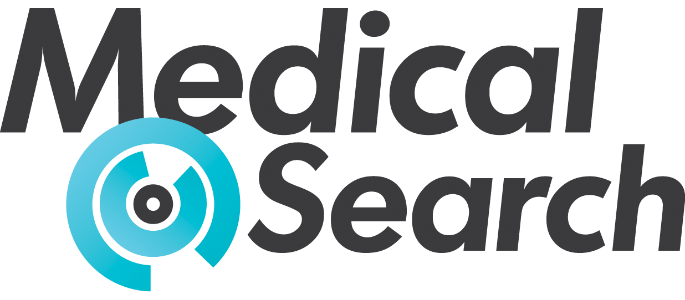


-160x160-state_article-rel-cat.png)

